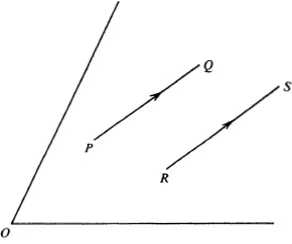
- 464 pages
- English
- ePUB (mobile friendly)
- Available on iOS & Android
Geometry: A Comprehensive Course
About This Book
"A lucid and masterly survey." — Mathematics Gazette Professor Pedoe is widely known as a fine teacher and a fine geometer. His abilities in both areas are clearly evident in this self-contained, well-written, and lucid introduction to the scope and methods of elementary geometry. It covers the geometry usually included in undergraduate courses in mathematics, except for the theory of convex sets. Based on a course given by the author for several years at the University of Minnesota, the main purpose of the book is to increase geometrical, and therefore mathematical, understanding and to help students enjoy geometry. Among the topics discussed: the use of vectors and their products in work on Desargues' and Pappus' theorem and the nine-point circle; circles and coaxal systems; the representation of circles by points in three dimensions; mappings of the Euclidean plane, similitudes, isometries, mappings of the inversive plane, and Moebius transformations; projective geometry of the plane, space, and n dimensions; the projective generation of conics and quadrics; Moebius tetrahedra; the tetrahedral complex; the twisted cubic curve; the cubic surface; oriented circles; and introduction to algebraic geometry. In addition, three appendices deal with Euclidean definitions, postulates, and propositions; the Grassmann-Pluecker coordinates of lines in S3, and the group of circular transformations. Among the outstanding features of this book are its many worked examples and over 500 exercises to test geometrical understanding.
Frequently asked questions
Information











Table of contents
- Cover
- Title Page
- Dedication
- Copyright Page
- Contents
- Preface
- Chapter 0: Preliminary Notions
- Chapter I: Vectors
- Chapter II: Circles
- Chapter III: Coaxal Systems of Circles
- Chapter IV: The Representation of Circles by Points in Space ofThree Dimensions
- Chapter V: Mappings of the Euclidean Plane
- Chapter VI: Mappings of the Inversive Plane
- Chapter VII: The Projective Plane and Projective Space
- Chapter VIII: The Projective Geometry of n Dimensions
- Chapter IX: The Projective Generation of Conics and Quadrics
- Chapter X: Prelude to Algebraic Geometry
- Appendix I
- Appendix II
- Appendix III
- Bibliography and References
- Index